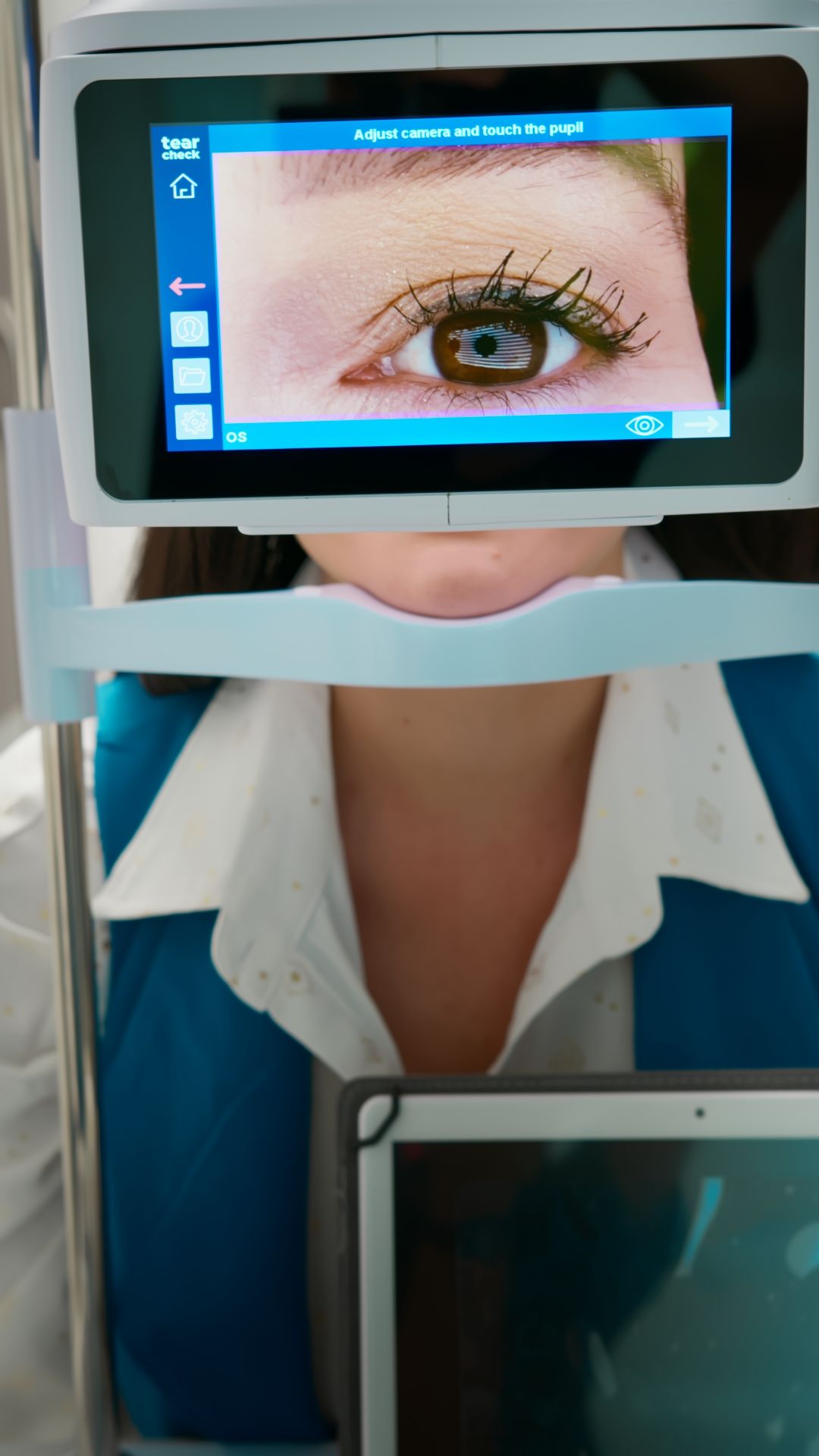Mon - Sat: 8:00 AM - 6:00 PM
Sunday: CLOSED
Dry Eye Treatment in Dubai
Effective dry eye treatment in Dubai requires specialized care from specialist eye doctors and advanced therapies tailored to individual needs.
Dry eye disease (DED) occurs when the eye cannot produce tears adequately or maintain proper moisture on its surface. The condition is characterized by persistent eye redness, a gritty or sandy feeling in the eyes, itchiness, and a burning or stinging sensation. Prolonged DED can have significant effects on vision and overall wellness, leading to discomfort, blurred vision and scarring of the cornea and the ocular surface.
To treat dry eye, our clinic in Dubai offers a range of advanced therapies and specialized care to alleviate the symptoms and enhance the visual well-being of patients with this condition.
Treatment options for dry eye disease
Eyelid Hygiene – Taking extra care to clean the eyelids to remove the buildup of debris in the eyelashes can help reduce irritation, blepharitis and dysfunction of the meibomian gland. The meibomian gland’s oil layer keeps tears from evaporating and lubricates the eyelid area, allowing for a smooth movement of the eyelids.
Artificial Tears – These provide temporary relief and soothe the eyes. However, artificial tears can increase the possibility of infection as they can wash away the natural infection-fighting tear film of the eye.
Punctal Occlusion – In cases of persistent dry eye syndrome, the best solution may be punctal occlusion. Here, your dry eye specialist or ophthalmologist will close off the tear drainage system by inserting a device into the tear duct. This procedure preserves the natural tears around the eyes for longer periods.
Early intervention and cataract treatment in our Dubai clinic using state-of-the-art technologies and techniques, can minimize the risk of permanent vision problems.
Make an Appointment
WhatsApp Us





Dry Eye Syndrome - Frequently Asked Questions
What causes dry eye syndrome or dry eye disease?
When the balance of tear production and tear loss is not maintained, dry spots appear on the eye’s surface and cause irritation.
Can watery eyes be a symptom of dry eyes?
Ironically the tear production glands sometimes react to the dry, scratchy feeling by watering more than ever. These reflex tears do not relieve dryness as they lack a natural component essential to properly lubricate the cornea.
Can dry eyes harm my vision?
Yes. If left untreated, severe dry eye syndrome can damage tissue and possibly scar the cornea of the eye.
What causes dry eye disease?
- Environment – The list is virtually endless! Sunny, windy, dry conditions, air conditioning, dry climates, smoke and air pollution are just a few.
- Contact lens wear – These could result in increased evaporation of tears, leading to irritation, increased protein deposits, inflammation and pain. Dry eye symptoms are the number one reason people stop wearing contact lenses.
- Aging – Tear production gradually decreases with age. At age 65 the tear glands produce about 40% of the lubricating tears they produced at age 18.
- Medications – Tear production could be reduced if you take certain medications. These include decongestants, antihistamines and diuretics, beta–blockers, sleeping pills, anti-depressants, pain relievers, skin rejuvenation treatment, alcohol, oral contraceptives and more.
- Screen time – Computer and television users may also have dry eyes as a result of staring at the screen for hours without blinking regularly.
- Medical conditions – Dry eye could be a related symptom of conditions such as rheumatoid arthritis, diabetes, thyroid abnormalities, skin conditions, asthma and lupus.
- Menopause and pregnancy – Women are more prone to develop dry eyes after menopause and during pregnancy.
What are the symptoms of dry eye?
- Burning and stinging
- Gritty feeling even when there are no foreign particles in your eye
- Dryness
- Itching
- Light sensitivity
- Mucous secretions in the eye
Can dry eye syndrome be cured?
There is no cure, although you can get relief for dry eyes and reduce your chances of complications with proper care and the right treatment for your specific needs.
What are the most reliable methods of dry eye treatment in Dubai?
Eyelid Hygiene – Taking extra care to clean the eyelids to remove the buildup of debris in the eyelashes can help reduce irritation, blepharitis and dysfunction of the meibomian gland. The meibomian gland’s oil layer keeps tears from evaporating and lubricates the eyelid area, allowing for a smooth movement of the eyelids.
Artificial Tears – These provide temporary relief and soothe the eyes. However, artificial tears can increase the possibility of infection as they can wash away the natural infection-fighting tear film of the eye.
Punctal Occlusion – In cases of persistent dry eye syndrome, the best solution may be punctal occlusion. Here, your dry eye specialist or ophthalmologist will close off the tear drainage system by inserting a device into the tear duct. This procedure preserves the natural tears around the eyes for longer periods.
What are the most reliable methods of dry eye treatment in Dubai?
A punctum plug acts like a stopper in a sink! Tears stay on the eye much longer when the tear duct (punctal opening) is closed. A small, soft silicone plug is non-surgically inserted into the natural punctum opening. The reversible procedure is performed in a few minutes in the office of your dry eye treatment doctor.



